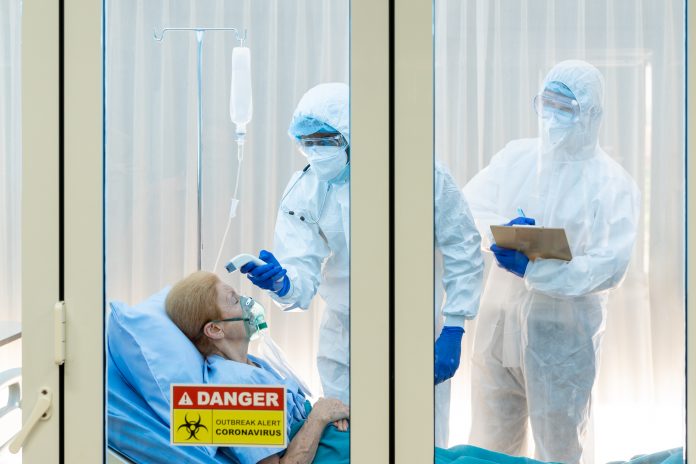Across the US, those living in rural counties have been more affected by variants of the COVID-19 vaccine, with a faster rate of spread as well as more deaths due to lower rates of vaccination
In the summer of 2021, rural counties across America saw 2.4 times more Delta variant cases than in urban areas, as the third wave of the COVID-19 pandemic spread faster.
Researchers found that rural counties had 2.4 times more infections per 100,000 people than urban areas between July 1 and Aug. 31, 2021, when the Delta variant was at its peak in the United States.
Due to the lack of vaccination uptake across the U.S – which is around 82% of rural America with a vaccination rate lower than 30% – areas with low vaccination rates experienced a more intense surge of new cases during the third wave of the pandemic in the United States
However, rural counties do also account for just 131 of the 376 areas with vaccination rates of 50% or more, showing that the vaccination rates vary between states.
Variation in vaccination rates
University of Cincinnati researchers find that the United States, unlike most countries, has a lot of variation in vaccination rates from state to state and county to county. This can be for numerous reasons, such as lack of healthcare access, political or religious beliefs, vaccine hesitancy due to family, peers or even just health reasons.
Therefore, trying to grasp where vaccination rates are low can help government and health agencies understand vaccine hesitancy and shortfalls in health care.
A major component to this surge in virus cases in rural areas in the United States can been seen due to the many challenges counties have in responding to the pandemic, such as less access to health care compared to urban areas.
Additionally, it is noted that some people have a fundamental misunderstanding of vaccines, which can be accounted for the low uptake of vaccines, which are designed to help the body’s immune system fight infection.
UC epidemiologist and lead author Diego Cuadros, said: “We found that infections from the Delta wave increased much faster in low-vaccination areas.
“Not only did we have more cases per capita in low-vaccination areas but the epidemic infection spread much faster compared to high-vaccination areas. They think it’s an invisible shield that protects you against the virus. That’s not how it works.”
Study co-author Phillip Coule, MD, associate dean at the Medical College of Georgia at Augusta University, said: “Our study underscores the importance of vaccination to mitigate the rate of spread of COVID-19 in the United States.
“Although we have long known that the COVID-19 vaccine is safe and effective, this study concludes that communities with higher vaccination rates have slower rates of community spread when an outbreak of COVID-19 does occur.”
Vaccinations can boost immune system to prevent illness from COVID
With Omicron affecting more people across rural America, there have been more per capita hospitalizations and deaths there than in urban areas.
Although vaccinated people are still able to contract the virus, for most people the vaccinations will help the immune system prevent catastrophic illness which can lead patients to serious hospitalization and death.
Studying the impact of the Omicron variant, the researchers used preliminary data which suggests that the Omicron variant, known for being highly contagious, can spread faster in congested urban areas.
However, it has become apparent that far more people per capita in these counties were vaccinated, fewer people in urban areas have died compared to rural areas where vaccinations are lacking.
UC College of Pharmacy Dean Neil MacKinnon said: “This tells us something powerful. Rural areas in the United States have faced many challenges responding to the pandemic. Important studies like ours are vital to understanding these areas characterized by vaccination hesitancy and vaccine availability to address concerns in the future.”
Cuadros added: “Omicron is more infectious than Delta and started spreading in highly connected urban areas,” said. Most infections are concentrated in high-vaccination areas. Vaccination still protects you from complications from infection, hospitalization and death.
“Science is dynamic. We’re always working to develop the best strategies based on what the data tells us. Scientists and medical professionals need to do a better job explaining the science to the public to help overcome vaccine hesitancy and restore trust.”
Researchers are aiming to find out which areas have low rates of vaccination, so they can help policymakers and health advocates conduct efforts to improve access to health care across these worse affected areas.











